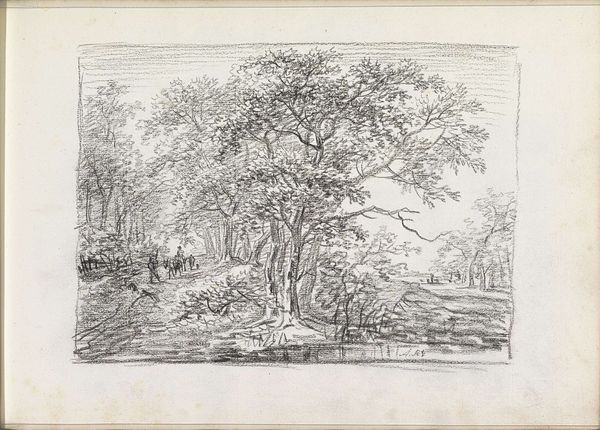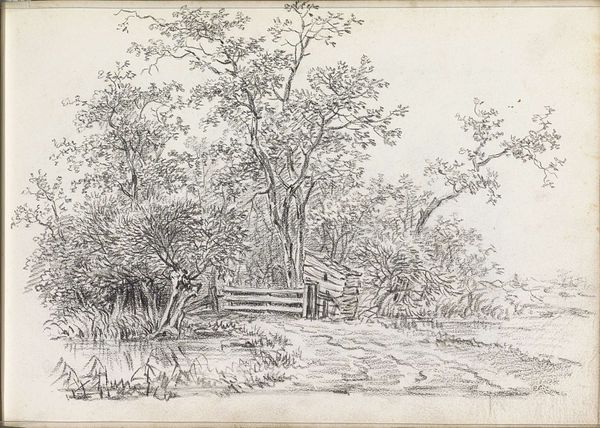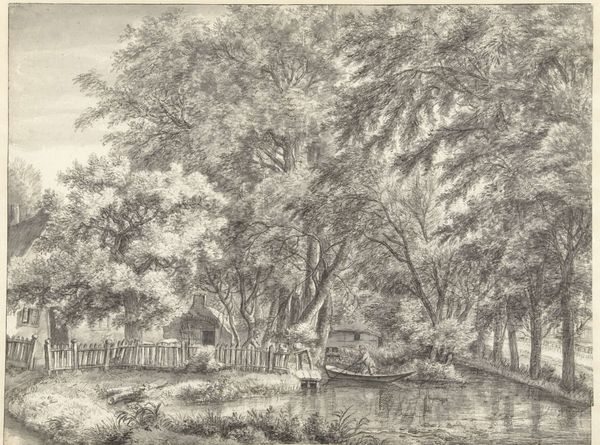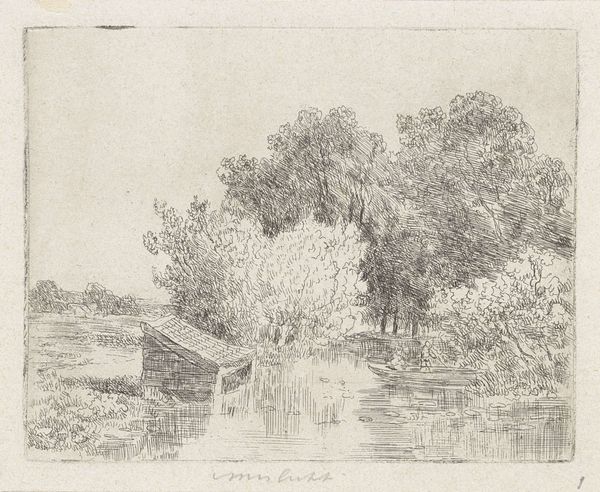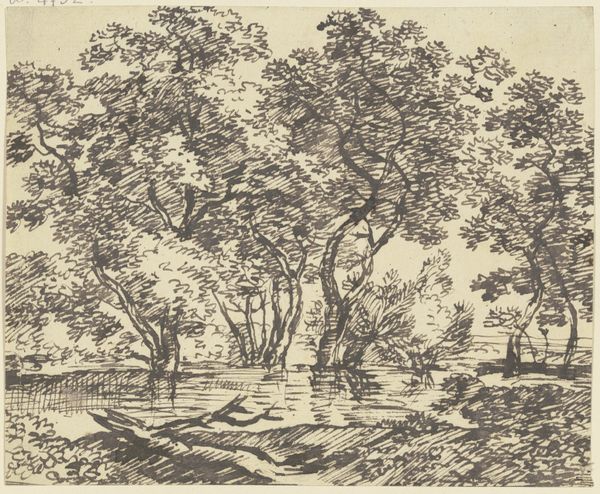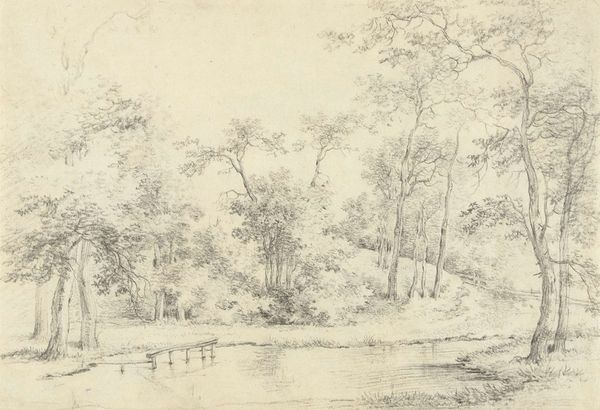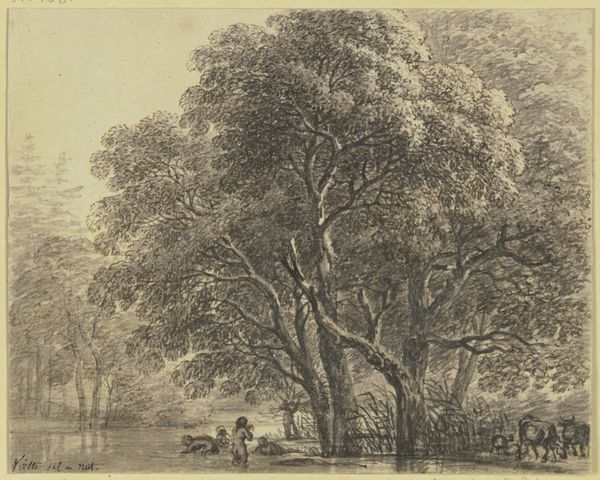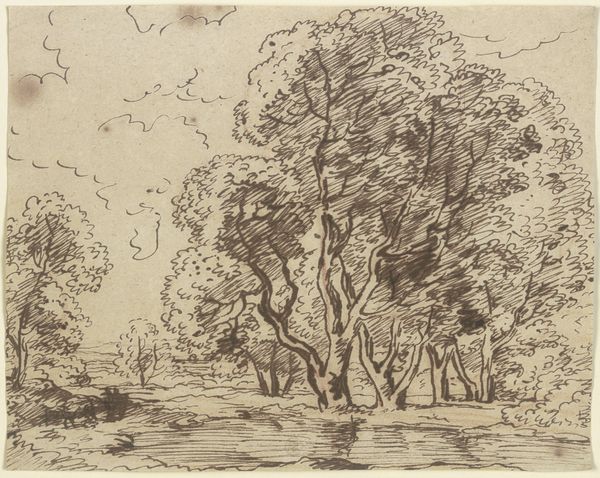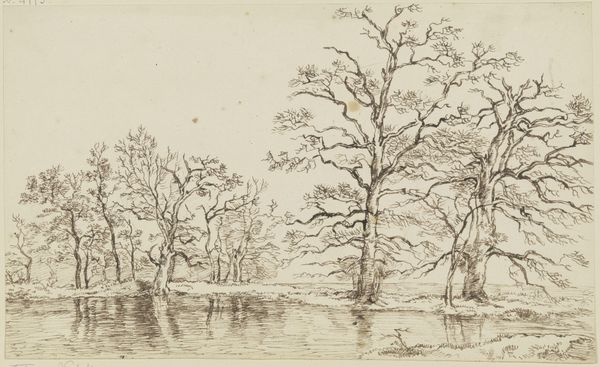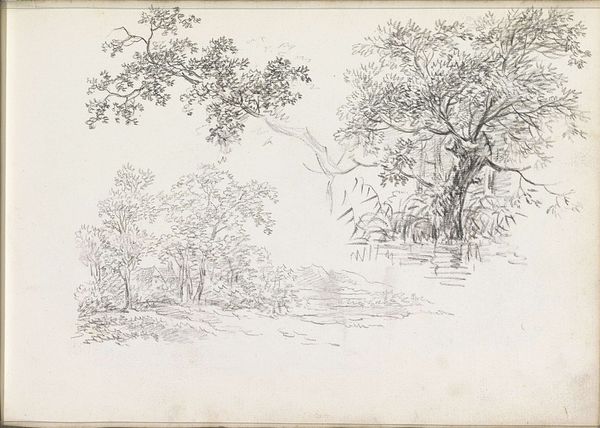
drawing, paper, pencil
#
drawing
#
pencil sketch
#
landscape
#
etching
#
paper
#
romanticism
#
pencil
#
realism
Copyright: Rijks Museum: Open Domain
Editor: This drawing, "Bomen aan een waterkant," or "Trees on a Waterfront," by Andreas Schelfhout, circa 1811, is really delicate. It's pencil on paper, and it makes me think about quiet, hidden places. What strikes you when you look at it? Curator: What interests me most is the clear connection to labor within the pencil work itself. Consider the Romantic style generally idealizes the ‘natural’ and the picturesque as being purely sublime. But if we examine the lines in this work, do they represent leisure, or hard work? Editor: That's interesting! I hadn't thought of it in terms of work. The detail in the trees, the reflection in the water... I saw skill, but not necessarily labor. Curator: Look closely at the repetitious marks required to render the foliage and water. Consider that pencils at this time, while cheaper than charcoal, were often crafted with materials obtained from extensive mining. How does this production—and the labor tied to its process—color your impression of the final, refined drawing? Does knowing this make the idyllic scene less… idyllic? Editor: I guess it does change things. It's like, the drawing is pretty, but it’s also a record of industry and effort. So, is Schelfhout pointing out that even nature is shaped by human action and material consumption? Curator: Exactly. The material and its usage become part of the meaning. The drawing then ceases to be an effortless representation of nature, instead calling to attention the network of production involved in its making. The ‘natural’ itself comes into question. Editor: I see. I came expecting Romanticism and found something more like early industrial commentary hiding within the landscape. Thanks, that’s a whole different way to appreciate this drawing.
Comments
No comments
Be the first to comment and join the conversation on the ultimate creative platform.
